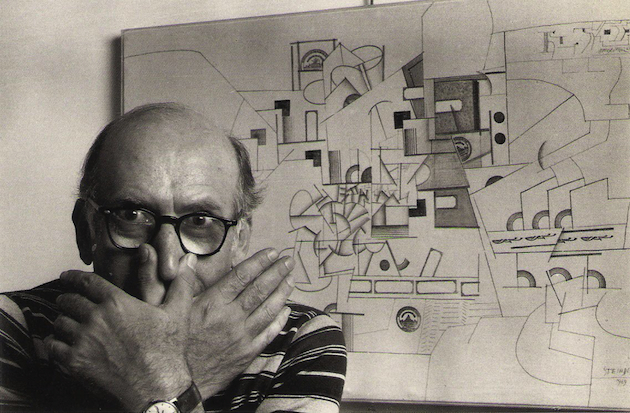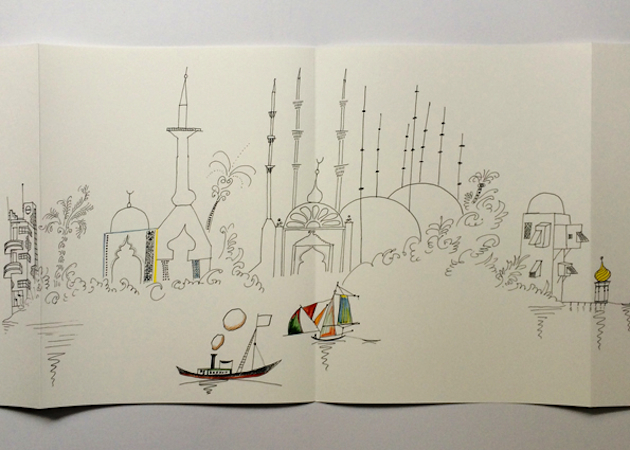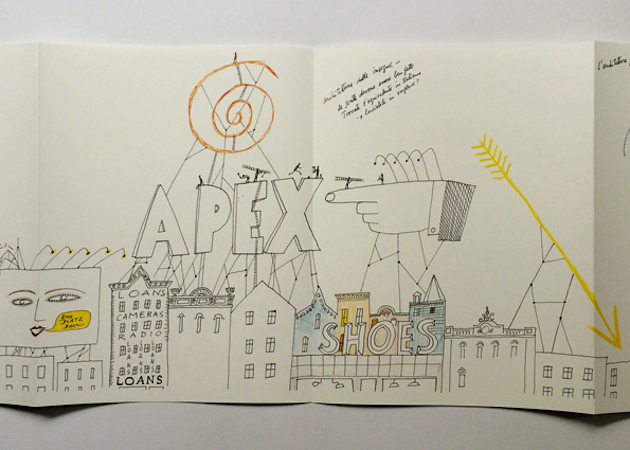
Drawing is the perfect medium to shape and express ideas and viewpoints on architecture without using words. Lines come together to make forms, which in turn become coherent images that enable the viewer to grasp even the most complex intentions and meanings. The American artist Saul Steinberg (1914-1999), well known for his long collaboration with The New Yorker, considered himself to be a ‘writer who draws’. A ‘speechless writer’ perhaps, but one who had a great deal to say about the buildings and cityscapes that came under the scrutiny of his critical eye. In this sense, he was a forerunner of postmodernism, and although he did not write essays many theorists of architecture see him as an important critic of design and construction.

Architecture by Line exhibition at Archizoom exhibition space in Lausanne weaves links between Steinberg’s two-dimensional oeuvre and architecture. In 1954, Steinberg’s four long drawings were produced for the Children’s Labyrinth, a spiraling, trefoil wall structure at 10th Triennial of Milan. The Line, which begins and ends with a hand drawing, is Steinberg’s manifesto about the conceptual possibilities of the line and the artist who gives them life. The Line occupied one of the structure’s three leaves, while the other two hosted Types of Architecture, Shores of the Mediterranean, and Cities of Italy. Types of Architecture is a satirical survey of world architecture (Steinberg was trained as an architect in Milan), from America’s log cabins to Bauhaus exaggerations to fragile skyscrapers. Shores of the Mediterranean presents a sailor’s-eye-view of the Mediterranean coastline, filled with the ruins and renascences of successive civilizations. The Italy Steinberg knew as a student in the 1930s resonates in Cities of Italy, as the inked line, drawn with the artist’s usual spare elegance, imagines an urban sprawl of campaniles, factories, piazzas, apartment houses, curlicued domes, and a water tank that seems to have escaped from a carnival. The four drawings were collected and published together for the first time by Nieves in the form of an artist’s book with four individual leporellos.

The exhibition also includes works by a selection of international artists – Ingo Giezendanner, Nathalie du Pasquier, Nigel Peake, Medelon Vriesendorp and Wesley Willis - who do not necessarily share any filiation with him but who, by their use of drawing, question the way people see and inhabit the places that architects design. The exhibition shows how visual impressions captured by artists may anticipate architectural thought, and even short circuit it. In doing so it poses a vital question: is art the vehicle by which architecture is set free?
Rujana Rebernjak
